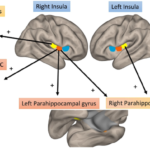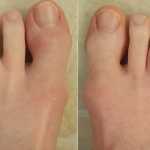 BARCELONA—In the world of psoriatic arthritis (PsA), the issue is not a lack of available therapies. Rather, a plethora of options exist within a milieu of uncertainty about which medication to use for each individual patient.
BARCELONA—In the world of psoriatic arthritis (PsA), the issue is not a lack of available therapies. Rather, a plethora of options exist within a milieu of uncertainty about which medication to use for each individual patient.
At EULAR 2025, Laura Coates, MBChB, MRCP, PhD, clinician-scientist and senior clinical research fellow at the National Institute for Health Research, University of Oxford, England, guided the audience through this complex topic in her session titled, Psoriatic Arthritis: How to Treat.
Delays in Care
Before delving into specific treatments, Dr. Coates pointed out that delay in diagnosis and undertreatment remain issues in for patients with PsA.
Charlton et al. found that patients with PsA have a longer duration of symptoms before referral to a rheumatologist and initiation of fewer disease-modifying antirheumatic drugs (DMARDs) compared with patients with rheumatoid arthritis (RA), resulting in less improvement in disease activity by three months.1 Additionally, a study from Gossec et al. examined treatment with apremilast vs. placebo in patients with oligoarthritis at baseline. They found that about 35% of patients in the placebo arm and 20% of patients in the apremilast arm progressed to polyarticular disease within four months.2
In Dr. Coates’ view, these data indicate that clinicians must be more vigilant in diagnosing and treating PsA early because the status quo is not ideal.
PsA Management
In managing PsA, clinicians rely on recommendations from several organizations, including the ACR, the National Psoriasis Foundation, the Group for Research and Assessment of Psoriasis and Psoriatic Arthritis and EULAR, which published a 2024 update on its recommendations for the pharmacologic management of psoriatic arthritis.3 Each set of guidelines is evidence-based, but limited in terms of selecting which drug to use at any given time and how to sequence therapy in patients who do not respond to their initial treatment.
Implications of Axial Disease
Dr. Coates noted that a key deciding factor in choosing a patient’s initial treatment is the absence or presence of axial disease. Although much of the evidence is borrowed from literature on axial spondyloarthritis, Dr. Coates identified tumor necrosis factor (TNF) α inhibitors, interleukin (IL) 17 inhibitors and Janus kinase (JAK) inhibitors as treatment options for axial involvement in PsA. She singled out the phase 3 MAXIMISE clinical trial as a well-done study looking at IL-17 inhibitor therapy in patients with PsA and axial involvement.4
In this double-blind study, 497 patients were randomized in a 1:1:1 ratio to receive with 300 mg of subcutaneous secukinumab, 150 mg of subcutaneous secukinumab or placebo weekly for four weeks and then every four weeks thereafter. At week 12, the patients receiving placebo were re-randomized to receive either 300 or 150 mg of secukinumab. At week 12, the percentage of patients who achieved an Assessment of SpondyloArthritis International Society (ASAS) 20 response was 63% in the 300 mg of secukinumab group, 66% in the 150 mg of secukinumab group and 31% in the placebo group. These benefits were sustained by the treatment groups through week 52, and efficacy was observed in patients regardless of prior TNF-α inhibitor exposure.4



